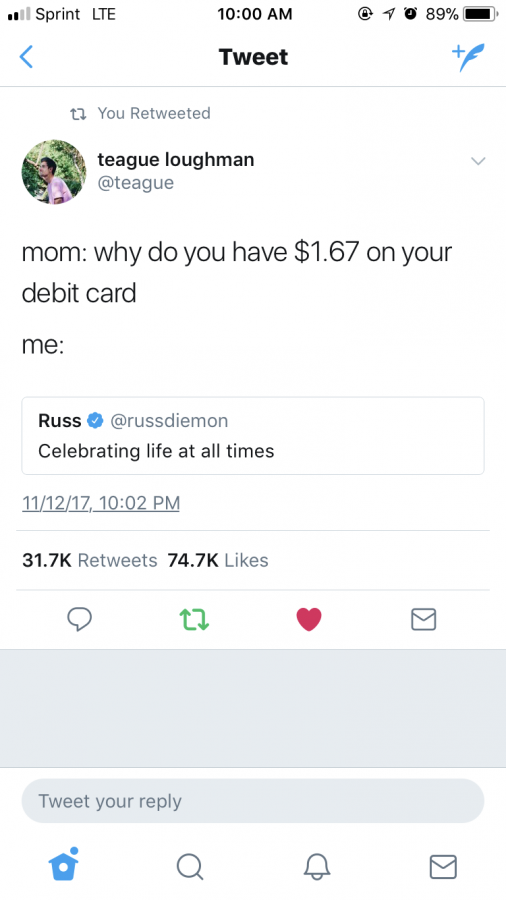For lack of a better term, meme
According to Urban Dictionary, Twitter is the virtual equivalent of mass telepathy. In literal terms, it is not, but it really does feel like it. Unlike other social media, Twitter has evolved into a place where people can relate to things no matter how socially taboo. Twitter disarms walls that show polished lives posed in good lighting and filtered to cover imperfections.
“I saw a screenshot of a tweet about Suave [shampoo] being the only type that dads buy for their daughters. That was relateable,” Elaine Walsh, sophomore, said.
That leaves a question, how did a white bird on a blue background become a sign of solidarity for a generation? That is pretty easy to answer—memes.
The Merriam-Webster dictionary defines “meme” as an idea, behavior style, or usage that spreads from person to person within a culture. The word was coined before the “you know I had to do it to them” kid and Kim Kardashian’s crying face. In 1976, scientist Richard Dawkins defined meme as “a unit of cultural transmission” and despite taking 30 years to rise to popularity, the word meme has become itself, a meme.
“I love memes. Every text I send is followed by a meme or a gif. My friends are sick of it,” Katherine Tilton, junior, said.
A tweet cannot be too over complicated because 140 to 280 characters are enough to get to a point and the absence of an edit tweet button. Memes can make that point.
“Twitter is my favorite social media, by far. It’s always assessable whether I’m at school or work, and I relate to everything I see,” Schaefer Stockman, junior, said.
It is very first-world to analyze why Twitter and memes can make a teenager feel like they are not alone in the world, but it is significant to note. It is a cultural phenomenon on everyone’s phones, a social media where people can relate to everyone somehow, and people can actually confront their insecurities and struggles in a humorous fashion without feeling completely ridiculous.

Hi I'm Kellie Little and I'm one of the senior editors on The Talon! I obviously love writing, but I also enjoy baking, shopping (with money I definitely...

